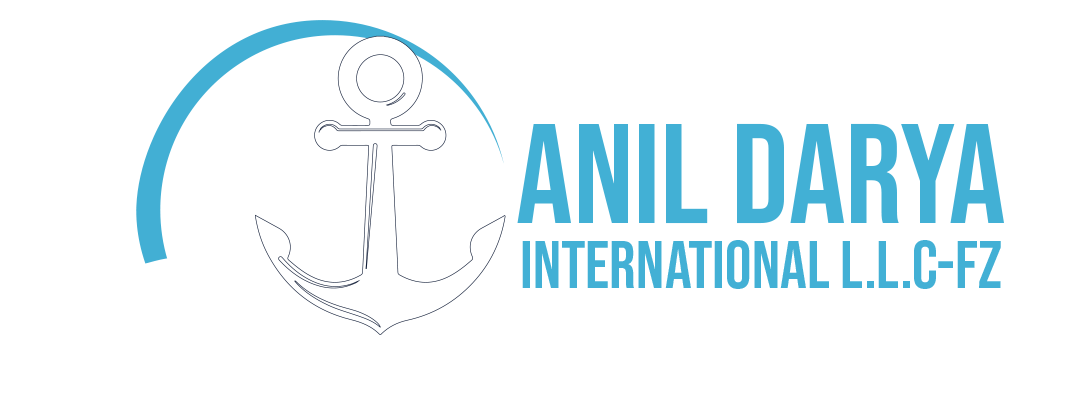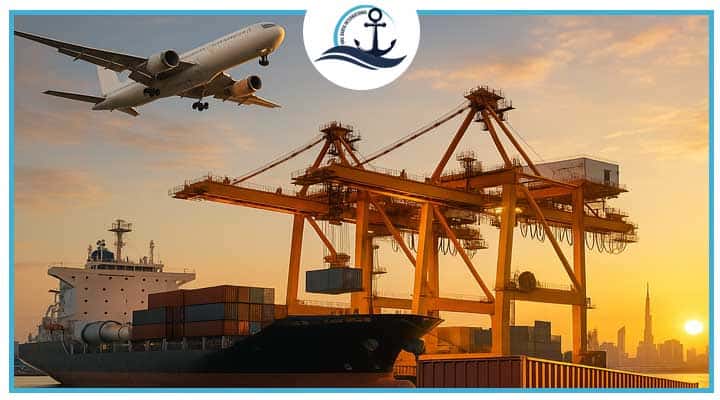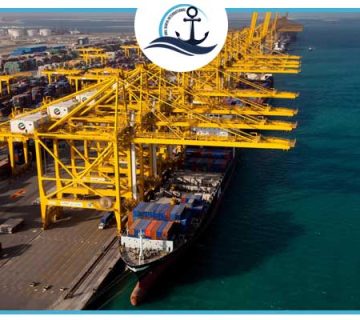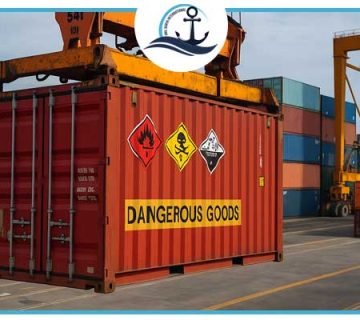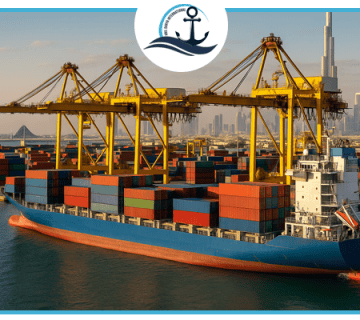|
Getting your Trinity Audio player ready...
|
The Impact of Rising Fuel Prices on Sea and Air Freight in Dubai
Dubai has long been recognized as a central hub for global logistics, connecting Asia, Europe, and Africa through its world-class ports and airports. However, in recent years, one of the most pressing challenges for shipping companies, traders, and freight forwarders has been the steady increase in global fuel prices.
As a leading logistics provider, Anil Darya Shipping helps businesses navigate these challenges by offering cost-efficient and compliant solutions across Dubai bulk cargo routes, UAE–Asia freight corridors, and Europe shipping lines.
The Global Fuel Price Landscape
The price of fuel has always been volatile, driven by geopolitical tensions, production quotas from OPEC, and disruptions such as the Russia–Ukraine conflict or supply shortages in Asia. For the shipping industry, these fluctuations are particularly critical:
- In sea freight, fuel (bunker) can account for up to 60% of a vessel’s running costs.
- In air freight, jet fuel costs can represent 30–40% of total operating expenses.
Historically, the industry has faced similar spikes. For example, during the 2008 financial crisis, bunker surcharges increased rapidly, forcing many carriers to adopt slow steaming as a cost-saving measure. In 2022, fuel prices rose sharply again due to geopolitical instability, causing record freight rates worldwide.
The difference in 2025 is that global supply chains are more interconnected than ever, and Dubai plays a far more central role than it did a decade ago. Every ripple in global fuel prices is immediately felt across Jebel Ali Port, Dubai International Airport, and Al Maktoum Airport, impacting shippers on both short-haul and long-haul routes.
Impact on Sea Freight in Dubai
Higher Rates
Route & Speed
Impact on Bulk & Breakbulk
Higher Freight Rates
One of the first visible effects of rising fuel costs is an increase in sea freight rates. Carriers impose bunker adjustment factors (BAFs) to cover fuel price volatility. For importers and exporters using Dubai bulk cargo routes to transport raw materials, petrochemicals, or construction equipment, these surcharges can raise the final delivered cost by a significant margin.
Route Adjustments and Slow Steaming
To save fuel, many shipping lines reduce speed—a practice known as slow steaming. While this cuts fuel consumption, it also extends transit times. For example:
- A container shipment from Dubai to Europe may take several days longer.
- Routes between UAE and Asia are being optimized with fewer transshipment points to balance cost and time.
Effects on Bulk and Break Bulk Cargo
Bulk and break bulk shipments are among the most fuel-intensive. Heavy machinery, project cargo, and oversized shipments require specialized handling that consumes additional energy. Dubai’s role as a break-bulk hub at Jebel Ali Port means these costs are passed directly onto traders in the Middle East, Africa, and beyond.
👉 Related reading: [Sea Freight Innovations at Jebel Ali: Reducing Delays & Improving Efficiency]
Impact on Air Freight in Dubai
Higher Rates
Air–Sea Shift
Efficiency & Innovation
Fuel Surcharges and Higher Rates
Airlines operating from Dubai have implemented rising fuel surcharges, particularly on popular routes to Asia and Europe. This is especially impactful for high-value or time-sensitive cargo such as pharmaceuticals, electronics, or dangerous goods.
Modal Shift Between Air and Sea
Some shippers are shifting from air freight to sea freight to mitigate costs. However, when goods are urgent or sensitive (for example, dangerous goods shipments that must comply with IATA regulations), air freight remains essential.
Efficiency and Innovation
Airlines are investing in next-generation aircraft with better fuel efficiency. At Dubai airports, improvements in digital customs clearance and cargo handling automation also help offset rising costs.
👉 Related reading: [Air Freight Trends in Dubai: Faster Delivery, Higher Costs, Environmental Impact]
Broader Trade Implications for Dubai
UAE–Asia Freight
Rising fuel costs affect Dubai’s pivotal role as a bridge to Asia. Many goods—textiles, electronics, raw materials—flow daily between China, India, and the UAE. Increased freight charges risk raising retail prices in Dubai and reducing the competitiveness of UAE-based traders.
Europe Shipping via Dubai
Despite higher costs, Europe–Dubai shipping routes remain vital. Dubai acts as a consolidation hub for cargo moving to Eastern Europe, the Mediterranean, and Northern Africa. Here, route efficiency and carrier partnerships become critical.
Consumer Price Effects
Higher logistics costs often translate to higher retail prices. Businesses operating in Dubai must balance profitability with competitiveness in a highly price-sensitive market.
Push Toward Sustainability
The surge in fuel costs has renewed interest in green shipping practices. Dubai is investing in alternative fuels, LNG-powered ships, and carbon offsetting schemes to reduce long-term reliance on oil.
👉 Related reading: [Green Shipping Strategies in Dubai: Fuel, Emissions, and Sustainable Logistics]
How Businesses Can Respond


Partner with Experienced Forwarders
Companies like Anil Darya Shipping offer tailored solutions to minimize the impact of fuel costs—through cargo consolidation, multimodal routing, and bulk contract negotiations with carriers.
Digitalization and Smart Logistics
Adopting digital freight platforms, predictive analytics, and AI-driven route planning helps companies cut waste and optimize shipping schedules.
Flexible Supply Chains
Traders are increasingly diversifying suppliers and transport modes to spread risk. By combining sea freight, air freight, and even land transport within the UAE region, businesses can remain resilient.
Dangerous Goods Expertise
When it comes to hazardous cargo, errors in documentation or packaging can cause delays that amplify cost pressures. With its specialized expertise, Anil Darya International L.L.C-FZ ensures safe and compliant DG shipping, protecting clients against unnecessary penalties or delays.
👉 Related reading: [How to Safely Pack and Label Dangerous Goods for Air Transport from Dubai]
Future Outlook for Dubai Freight
Looking ahead, the UAE government and private sector are jointly working toward:
- Alternative Fuel Investments: LNG and hydrogen-powered ships could stabilize long-term costs.
- Regional Trade Agreements: Strengthening UAE–Asia and Europe trade corridors to secure cargo flows despite rising prices.
- Technology Adoption: Digital twins, blockchain for supply chain transparency, and AI for real-time fuel monitoring are becoming industry norms.
Dubai’s resilience and its proactive adoption of smart logistics policies ensure that, even under fuel price volatility, it remains the leading hub for Middle Eastern trade.
If your business is struggling with the rising cost of sea and air freight in Dubai, you don’t need to face it alone.
Frequently Asked Questions (FAQ)
Because Dubai is a major transshipment hub, any increase in global fuel prices directly impacts both sea freight surcharges and air cargo rates across its trade corridors.
Bulk and break bulk shipments—such as heavy machinery, raw materials, and chemicals—consume more fuel per ton, making them especially sensitive to price increases.
Yes, but only with optimized routing and efficient partnerships. Strategic planning can offset higher costs.
Yes. With proper packaging, labeling, and compliance, IATA-certified air freight services help avoid costly delays.
It depends on your cargo type. For time-sensitive or hazardous cargo, air is essential. For less urgent goods, sea freight may be more cost-effective.
By negotiating with carriers, optimizing cargo consolidation, and advising on compliance, Anil Darya Shipping reduces unnecessary costs.
Yes. Many carriers and forwarders, including Anil Darya, are adopting green shipping practices that combine efficiency with reduced carbon emissions.
Demand will remain strong, but carriers will focus more on consolidation, efficiency, and technology adoption.
Absolutely. Jebel Ali’s scale, efficiency, and connectivity mean it remains one of the most cost-effective regional gateways.
Simply contact our team today to receive a tailored plan for your sea or air freight requirements.
